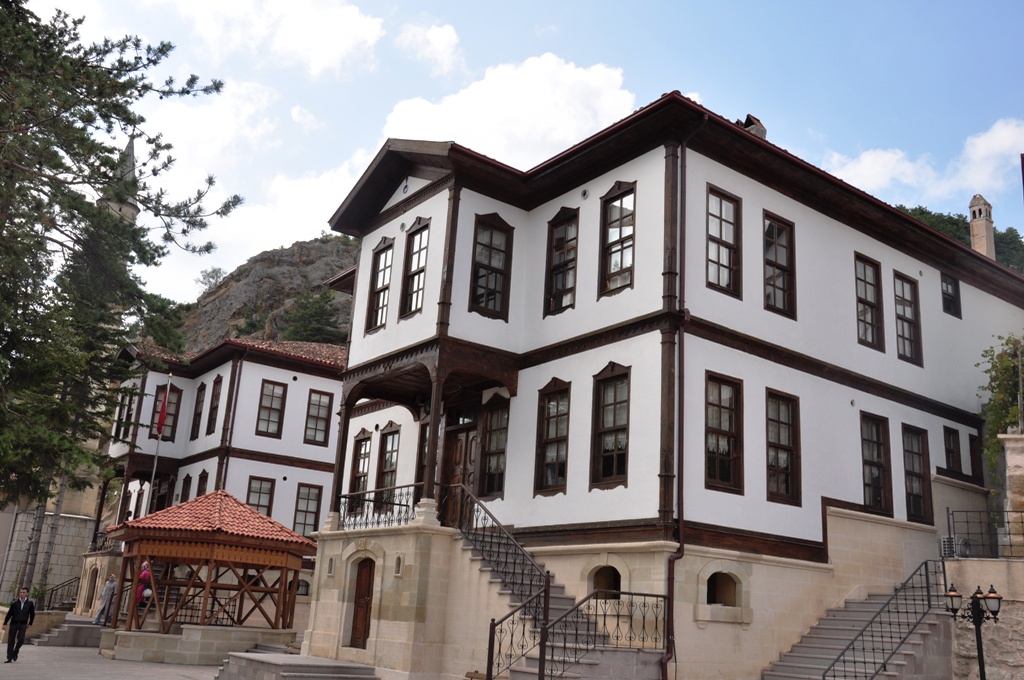Kastamonu
Kastamonu

About 60,000 people of Kastamonu lie on the way to Safranbolu, and because it has a lot of interesting monuments and a nice museum, it's worth staying here for a day, if only for that, to take a walk in the neighborhood dotted with old buildings. Tourists who prefer to stay in a seaside town or in the popular Safranbolu do not know this place at all (therefore cheap hotels and locals). And this is where the real Turkish prevails, a bit conservative atmosphere of an anatolian town, whose bazaar and many medieval buildings, as well as beautiful Ottoman houses express the spirit of old times, and this impression is intensified by the Byzantine fortress towering over the city.
History
The name of the city comes from the word Castra Comneni, or "Comnenian Castle", Adrianople (Edime today) branch of the family. The traces of old settlements come from more distant times, but nothing specific is known about them. The Comnenians settled here at the end of the 10th century., when Emperor Basil II granted the lands of Paphlagonia to his adviser Manuel Erotikos, the founder of the dynasty. His son Izak Comnenus became the Emperor of Byzantium, beginning the reign of the Comnenians (do 1185). W XI w. the city was occupied by the Seljuks, and immediately after them came the Danishmen. Several times the Byzantines managed to retake Kastamonu, which later, however, again passed into the hands of the Turks. From the end of the 13th century. The Isfendiyaroglu dynasty ruled here, founded by Emir Semsettin Candara (hence the lineage is also called Candaroglu). who came from Mongolia. W 1392 r. Admittedly, Kastamonu was captured by Beyazid I., but when he was captured by the Mongols (after losing the battle with Tamerlane in 1402 r. under Ankara), they plundered and burned the city, and after they left the rulers of Isfendiyaroglu again. Ultimately, he defeated them only in 1460 r. Mehmed II the Conqueror and since then the city has permanently entered the borders of the Turkish state.
Places, which are worth seeing
It's best to start your sightseeing tour from Kastamonu Muzesi (if the renovation is already completed), which is open from. 8.30- 17.00 (with an hour break at noon), introduction: 0,7 USD, students: 0,35 USD. The museum is located in a building approx. 150 m east of Cumhuriyet Meydani, By the way, this is the place, in which Ataturk announced a controversial headgear reform. The museum presents many exhibits from Roman and Byzantine times, as well as an interesting ethnographic collection. We will also see some photos and personal items of Ataturk.
Going west and turning left by the stone bridge, we will find ourselves in the square with the largest mosque in the city – Nasrullah Mosque, in front of which there is a beautiful double ablution fountain surrounded by arcades and covered with two domes. The temple was built in 1506 r. on the set of Ulu Camii, that is, it is almost square, large hall divided into several aisles, covered with nine domes. Porch (currently glazed) preceding the prayer room is seven-part, except that the dome covers the middle part, and the rest are barrel vaults. The mosque was rebuilt and renovated many times. The inside is surprisingly colorful, it is worth paying attention to the artistically carved chair for the imam reading the Koran (to the left of the mihrab). The mosque and the fountain are the first buildings in Kastamonu from the time of the Ottomans. legend says, that who will drink from the fountain of water, this one will return to Kastamonu seven times!
So if we don't like it here, we better not risk it. At the back of the mosque is Munire Medresesi, where today there are souvenir shops. On the south side of the square (left, if we are facing Nasrullah Camii) there are Asirefendi Hani inn and Ismail Bey Hani (Kursunlu Hani). Shops were set up in the first one, a second, coming from 1460 r., it is closed.